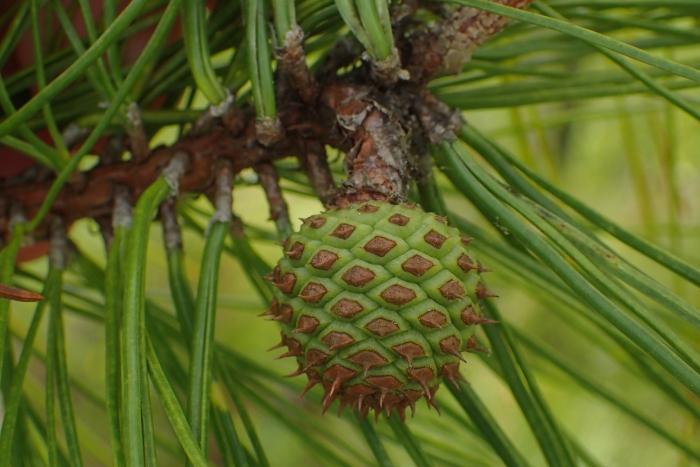Pond Pine
(Pinus serotina)
Pond Pine (Pinus serotina)
/
/

Austin Pursley
Public Domain
Image By:
Austin Pursley
Recorded By:
Copyright:
Public Domain
Copyright Notice:
Photo by: Austin Pursley | License Type: Public Domain | License URL: http://creativecommons.org/publicdomain/zero/1.0/ | Rights Holder: Austin Pursley | Publisher: iNaturalist | Date Created: 2020-05-17T10:14:27-07:00 |

















































Estimated Native Range
Summary
Pinus serotina, commonly known as Pond Pine, is an evergreen tree that is part of the natural flora of pocosins, wet savannahs, and peat bogs in the Coastal Plain of the Southeastern United States. It is adapted to environments that are periodically saturated with water, yet it can also be found in drier, sandy soils. Pond Pine can reach up to 21 meters (69 ft) in height and is characterized by its somewhat crooked growth habit and irregular crown. The needles are in bundles of three or four, measuring 15–20 cm (6–8 in) long, which is shorter than many other pine species. The cones are almost round, 5–8 cm (2–3+1⁄4 in) long, with small prickles on the scales, and are serotinous, meaning they require the heat from fire to open—a trait that is an adaptation to its fire-prone native habitat.
Pond Pine is valued for its adaptability to wet conditions and is used for reforestation in its native range. It is also planted for wildlife habitat enhancement, as its seeds provide food for various bird and mammal species. In cultivation, Pond Pine is best suited to full sun exposure and can tolerate a range of soil moisture conditions, from medium to wet. It requires soils with medium to fast drainage. While it is not commonly used in ornamental landscaping, it can serve as a unique specimen tree in large spaces. Gardeners should be aware that Pond Pine may not be suitable for small gardens due to its potential size and irregular shape.CC BY-SA 4.0
Pond Pine is valued for its adaptability to wet conditions and is used for reforestation in its native range. It is also planted for wildlife habitat enhancement, as its seeds provide food for various bird and mammal species. In cultivation, Pond Pine is best suited to full sun exposure and can tolerate a range of soil moisture conditions, from medium to wet. It requires soils with medium to fast drainage. While it is not commonly used in ornamental landscaping, it can serve as a unique specimen tree in large spaces. Gardeners should be aware that Pond Pine may not be suitable for small gardens due to its potential size and irregular shape.CC BY-SA 4.0
Plant Description
- Plant Type: Tree
- Height: 40-75 feet
- Width: 30-65 feet
- Growth Rate: Moderate
- Flower Color: N/A
- Flowering Season: Non-Flowering
- Leaf Retention: Evergreen
Growth Requirements
- Sun: Full Sun
- Water: Medium
- Drainage: Medium, Fast
Common Uses
Bird Garden, Butterfly Garden, Deer Resistant, Drought Tolerant, Fragrant, Low Maintenance, Rabbit Resistant, Water Garden
Natural Habitat
Naturally occurs in pocosins, wet savannahs, and peat bogs within the Coastal Plain of the Southeastern United States
Other Names
Common Names: Bay Pine, Marsh Pine, Pocosin Pine, Pin Des Mares, Pin Sérotineux, Pin Tardif, Wan Song
Scientific Names: , Pinus serotina, Pinus rigida subsp. serotina, Pinus rigida var. serotina, Pinus alopecuroides,
GBIF Accepted Name: Pinus serotina Michx.